When it comes to horses, their stature is not just about majestic beauty; it’s a crucial aspect that affects their health, function, and the disciplines they are suited for. The height of a horse is often one of the first questions asked by enthusiasts and prospective buyers alike. But, how tall is a horse, exactly?
The height of a horse can vary significantly depending on the breed and type. For instance:
- Light riding horses typically stand between 14–16 hands (1.42–1.63m).
- Larger riding horses range from 15.2–17 hands (1.57–1.73m).
- Heavy or draft horses are usually 16–18 hands (1.63–1.83m).
- All registered Miniature Horses will be under 38 inches tall.
Delving Deeper into the Importance of Equine Measurements

Understanding the nuances of a horse’s height is essential, as it not only influences the suitability for specific tasks but also ensures the well-being of the horse through the correct fitting of equipment and precise medical care. Breeders, veterinarians, and owners must take into account various factors that contribute to the physical development of these animals.
Factors Affecting Horse Size Beyond Genetics
The genetics of a horse serve as the primary determinant of its potential stature, yet other elements such as nutrition and living conditions can substantially shape its growth. Different breeds like Thoroughbreds and Quarter Horses display distinctive builds influenced by their intended uses. The quality and balance of a horse’s diet are crucial in supporting proper growth, and environmental conditions contribute to the overall development of the horse.
Selective Breeding and Height
While genetics provide the initial blueprint for a horse’s potential size, selective breeding practices aim to enhance specific traits, including height, to meet the demands of various equestrian disciplines and breed standards.
Supporting Growth Through Nutrition and Environment
A balanced diet rich in essential nutrients is pivotal for a horse to reach its height potential as determined by its genetic makeup. The environment, including factors like exercise and space, further influences not only the height but also the general physical condition of a horse.
Evaluating Horse Height Within Breed Norms
There exists a general range within each horse breed that reflects the average size of its members. This standard serves as a useful tool for comparison and monitoring growth, helping to ensure that individual horses are developing as expected.
- Thoroughbred: Commonly 15.2–17 hands (1.57–1.73m) in height
- Quarter Horse: Often found to be 14.3–16 hands (1.50–1.63m)
- Welsh Pony: Typically 11.2–14.2 hands (1.17–1.47m), depending on the section (A-D)
Growth Monitoring Strategies
For breeders and owners invested in tracking the development of their horses, consistent measurement is key. Regular monitoring can uncover growth patterns and highlight any anomalies.
Broad Benefits of Height Awareness
Comprehending the specifics of horse size is valuable across various equine-related professions. Farriers, for example, may adapt their shoeing methods to accommodate a horse’s stature, while veterinarians might customize health care plans to suit the horse’s size and breed characteristics.
In conclusion, equine height is a complex attribute that mirrors the breed’s genetic traits, the care received, and the purposes for which the horse is intended. A profound grasp of these factors enriches our understanding of horse care and management.
Height Diversity in Horse Breeds
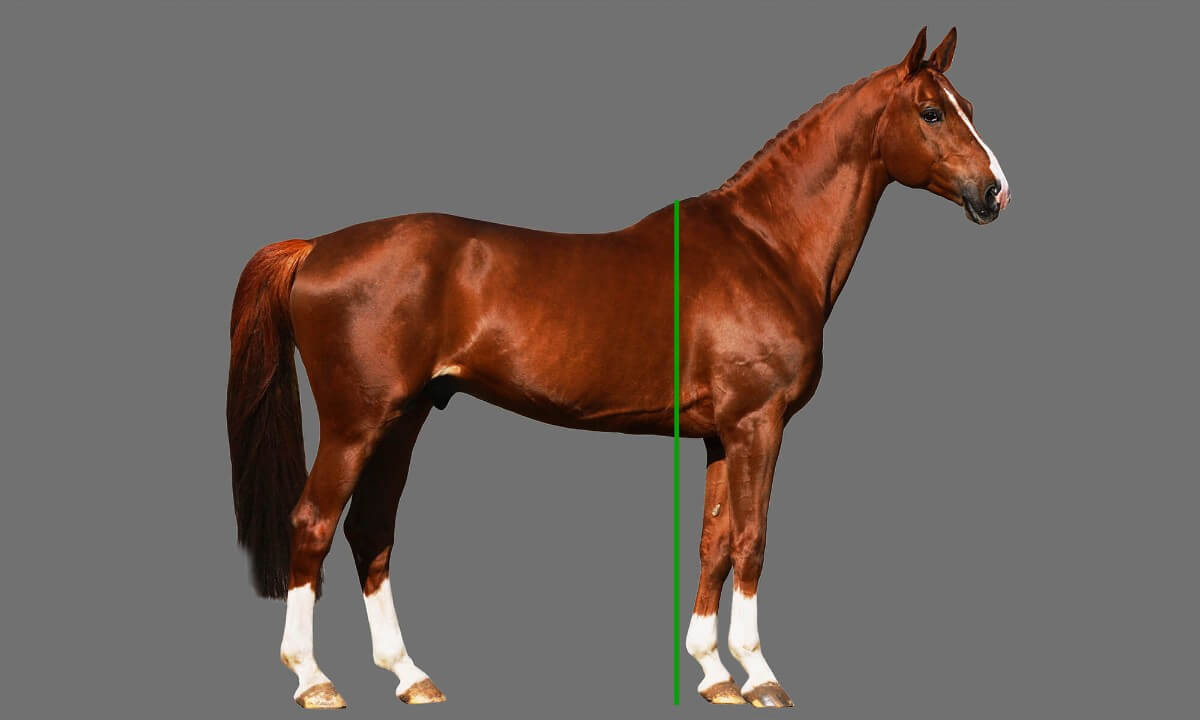
With each horse breed comes a distinct genetic blueprint for size, making the concept of average horse height a diverse and essential factor for various equestrian roles. The American Warmblood, for instance, is often seen at a height of 15–17 hands due to its role in equestrian sports. Arabian horses, commonly used in endurance events, typically range from 14.1–15.1 hands. Moreover, the towering Shire horse is usually found in the 16–17 hand range, rendering it an imposing figure in both labor and exhibition contexts.
Height Preferences Based on Usage
Different equestrian activities often require horses of certain sizes. For example, taller horses are usually preferred in show jumping and dressage for their athletic abilities, while shorter horses are favored for trail riding or youth programs because of their manageability.
Breed Standards and Optimal Height
Recognizing that each horse breed has an optimal height range for its specific function, breed associations maintain standards to guide breeding practices. These standards help preserve the desired physical attributes of the breed, ensuring their continued success in their traditional roles.
- Andalusian: Typically at 15.2–16.2 hands, these horses excel in classical dressage.
- Morgan: A versatile breed, Morgans usually measure between 14.1–15.2 hands and are adept at both riding and driving.
- Paint Horse: Known for their versatility, Paints often stand at 14.2–16 hands, suitable for various equestrian activities.
- Friesian: With heights ranging from 15–17 hands, Friesians are celebrated for their carriage driving and graceful movements.
Subcategories Based on Height in Some Breeds
Certain breeds, such as the Welsh Pony, categorize their members by height, creating subdivisions that align with specific functions. These internal classifications range from the smaller Section A ponies to the more substantial Section D cobs.
Height’s Relationship with Equestrian Performance
Height plays a pivotal role in a horse’s ability to perform in different sporting disciplines. For example, taller show jumpers have an advantage in clearing higher jumps, while endurance horses that are slightly shorter may exhibit better stamina and agility.
Visualizing Breed Height Differences
While a graphical representation is not feasible here, imagining a chart comparing the height ranges of various horse breeds can provide a clear perspective on the physical diversity that influences selection for particular equestrian disciplines.
Mastering the Art of Measuring Horse Height
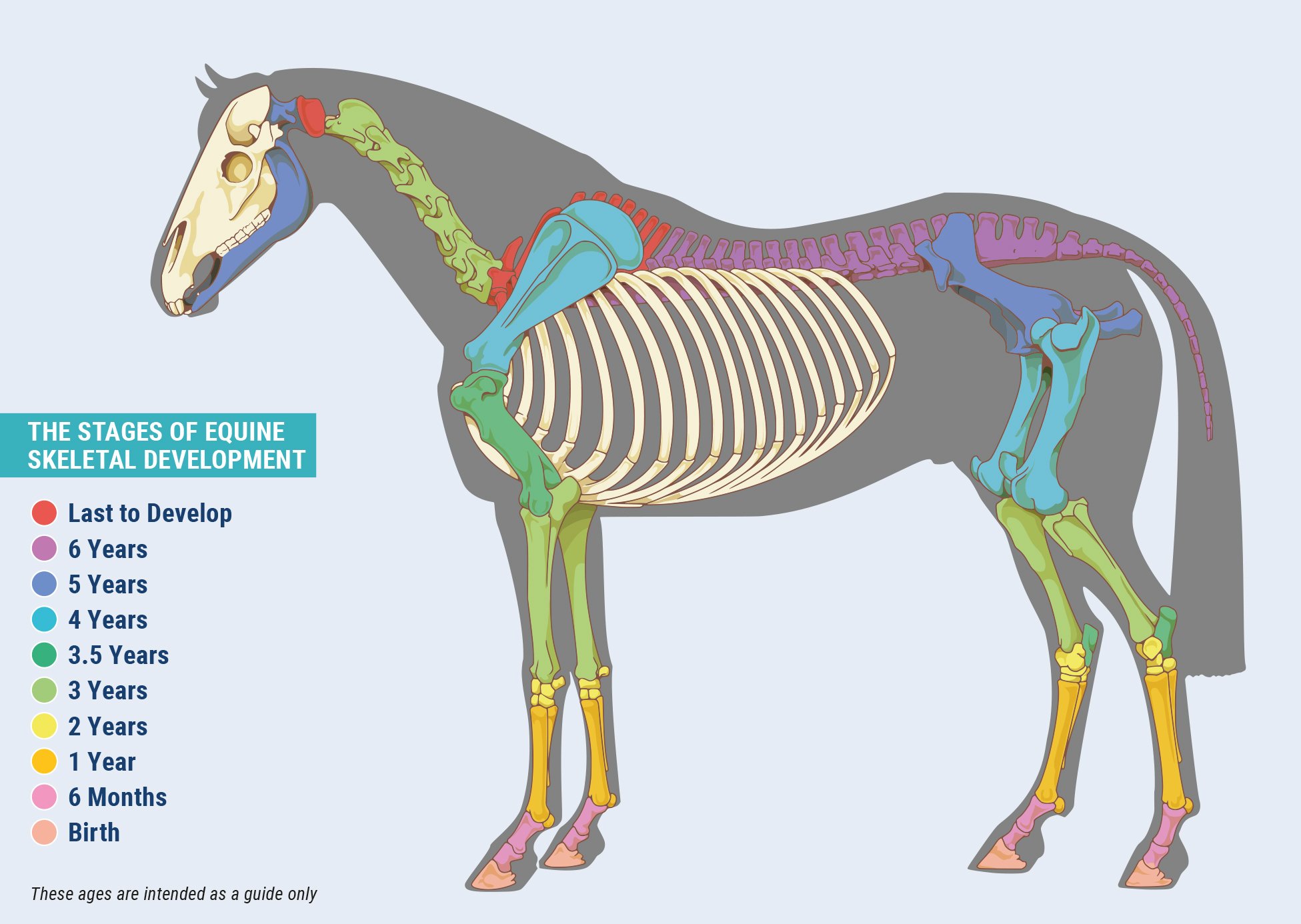
Equine professionals recognize the significance of accurate horse height measurement. It not only assists in determining a horse’s suitability for various activities but is also fundamental for health assessments and fitting equipment. This skill is essential for breeders, equine buyers, and competitors, and it underscores the importance of precision in the equestrian domain.
The Enduring Tradition of the Hand Measurement
Measuring horse height in hands is a revered tradition, tracing back to ancient practices. The hand, now standardized at 4 inches, has been the unit of measure for equines for centuries and continues to be used due to its historical significance in horse husbandry.
Embracing Metric Measurements in Equine Practices
In an increasingly connected world, converting measurements to the metric system is vital for international equestrian affairs. A single hand equates to 10.16 centimeters, and this knowledge is indispensable for those involved in global equestrian transactions and competitions.
Key Guidelines for Measuring Equine Height
To obtain an accurate height measurement, the horse should be placed on a level surface, ensuring that its weight is equally distributed across all hooves. The height is then measured vertically from the ground to the withers, using a specialized measuring stick with both hands and centimeter markings for precision.
- Confirm the horse is on a flat, even surface.
- Balance the horse’s stance to ensure an even posture.
- Align the measuring stick vertically and adjacent to the withers.
- Record the measurement at the highest point of the withers, noting the hands and inches.
The Importance of Precise Measurement
Correct measurements are crucial for proper tack fitting, which can influence a horse’s comfort and ability to perform. Additionally, accurate height data is necessary for maintaining breed standards and for determining eligibility in various equestrian competitions.
Choosing the Correct Measuring Instruments
The preferred instrument for this measurement is a dedicated equine measuring stick, which may include a level or plumb line for enhanced accuracy. While a soft measuring tape can serve as a temporary alternative, it should be used with caution to avoid imprecise readings.
Avoiding Errors in Measurement
Common mistakes in the measuring process often arise from inexperience. These can include miscalculating the highest point of the withers or using an inappropriate measuring device. Awareness and education on these matters can help equestrians avoid such errors and perform measurements accurately.
Monitoring Growth and Health Through Measurement
For growing horses, consistent height measurement is a valuable practice for monitoring development and spotting any irregular growth patterns, which could signal health issues. In adult horses, regular reassessment ensures that their height is accurately documented for breeding and competitive records.
Promoting Accurate Measurement Techniques
Through educational initiatives and practical workshops, the equestrian community can improve proficiency in measuring horse height. Sharing knowledge and techniques is essential for upholding the integrity of equine measurement practices and for the overall advancement of the equestrian field.
Exploring the Stature of Draft Horses
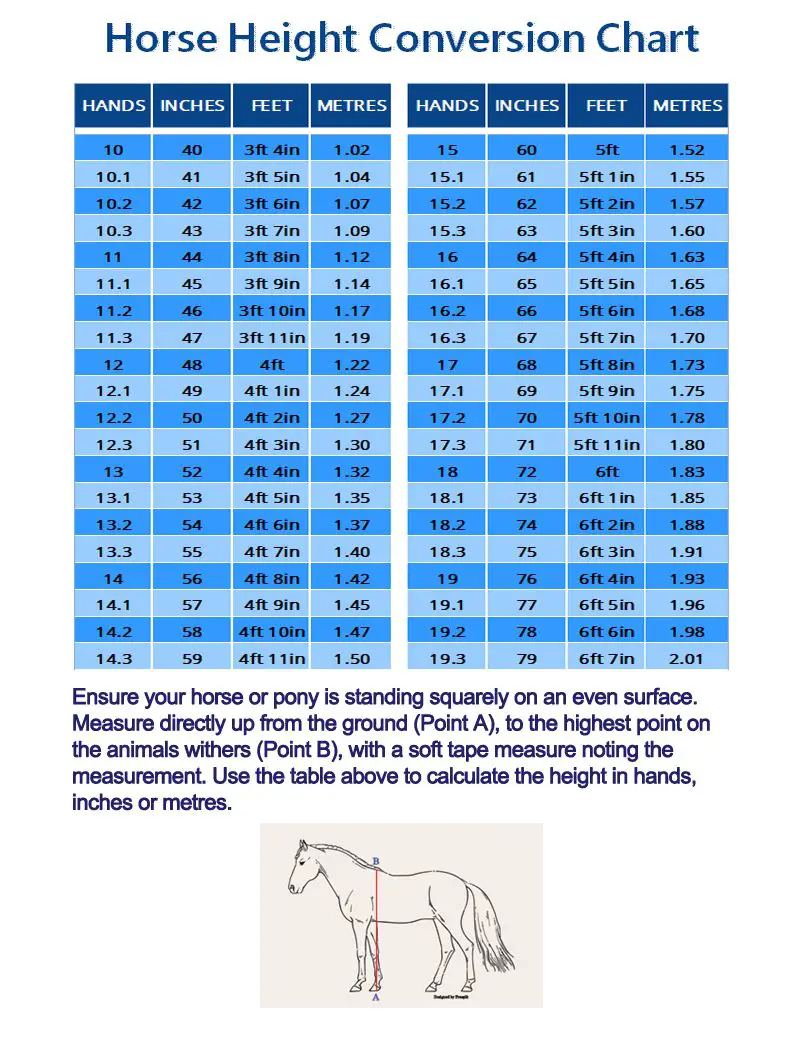
The distinctive size and strength of draft horses distinguish them within the equine family. Their robust build, particularly their height, is integral to their suitability for heavy-duty tasks. With their formidable presence, draft horses have long been valued for their contributions to various industries and equine sports.
Contemporary Uses of Draft Breeds
While their historical importance in agriculture has lessened, draft horses remain active in areas such as logging, competitive pulls, and as dignified participants in parades, where their impressive size and strength are still highly regarded and utilized.
Size Diversity Among Draft Horse Breeds
The Belgian Draft, renowned for its muscular stature, typically stands between 16.2 and 17 hands, ideal for strenuous farm labor. The Percheron, ranging from 15 to 18 hands, is favored for its adaptability in farm and driving roles.
- Belgian Draft: 16.2–17 hands (1.68–1.73m)
- Percheron: 15–18 hands (1.52–1.83m)
- Shire: Often exceeding 17 hands (1.73m+)
- Clydesdale: 16–18 hands (1.63–1.83m)
Specialized Build Across Draft Horse Varieties
The Suffolk Punch and the Norwegian Fjord represent the smaller, yet robust spectrum of draft breeds, with the former typically standing between 16.1 and 17 hands and the latter ranging from 13.2 to 15 hands.
- Suffolk Punch: 16.1–17 hands (1.65–1.73m)
- Norwegian Fjord: 13.2–15 hands (1.37–1.52m)
Choosing the Ideal Draft Horse for Different Roles
Selecting a draft horse for a specific role involves careful consideration of its height. This factor is essential for harness and equipment compatibility, ensuring the animal’s maximum comfort and efficiency during tasks such as forestry work or festive events.
Height and Its Role in Draft Horse Harnessing
Ensuring that a draft horse’s harness fits its size is key to harnessing its power effectively. Proper equipment fitting enhances the horse’s ability to perform demanding tasks, leveraging their natural strength and endurance.
Strategic Breeding for Optimal Height
Height is a critical aspect in draft horse breeding programs, aimed at producing offspring that embody the strength and grandeur expected of these breeds. This focus on stature contributes to the ongoing legacy and appeal of draft horses.
Marveling at the Grandeur of Draft Horses
Draft horses command respect for their extraordinary size, a tribute to the dedicated breeding and care invested in these gentle giants over generations. The emphasis on maintaining draft horse height is testament to its significance in the heritage and enduring appeal of these powerful breeds.
Understanding the Pony Height Spectrum
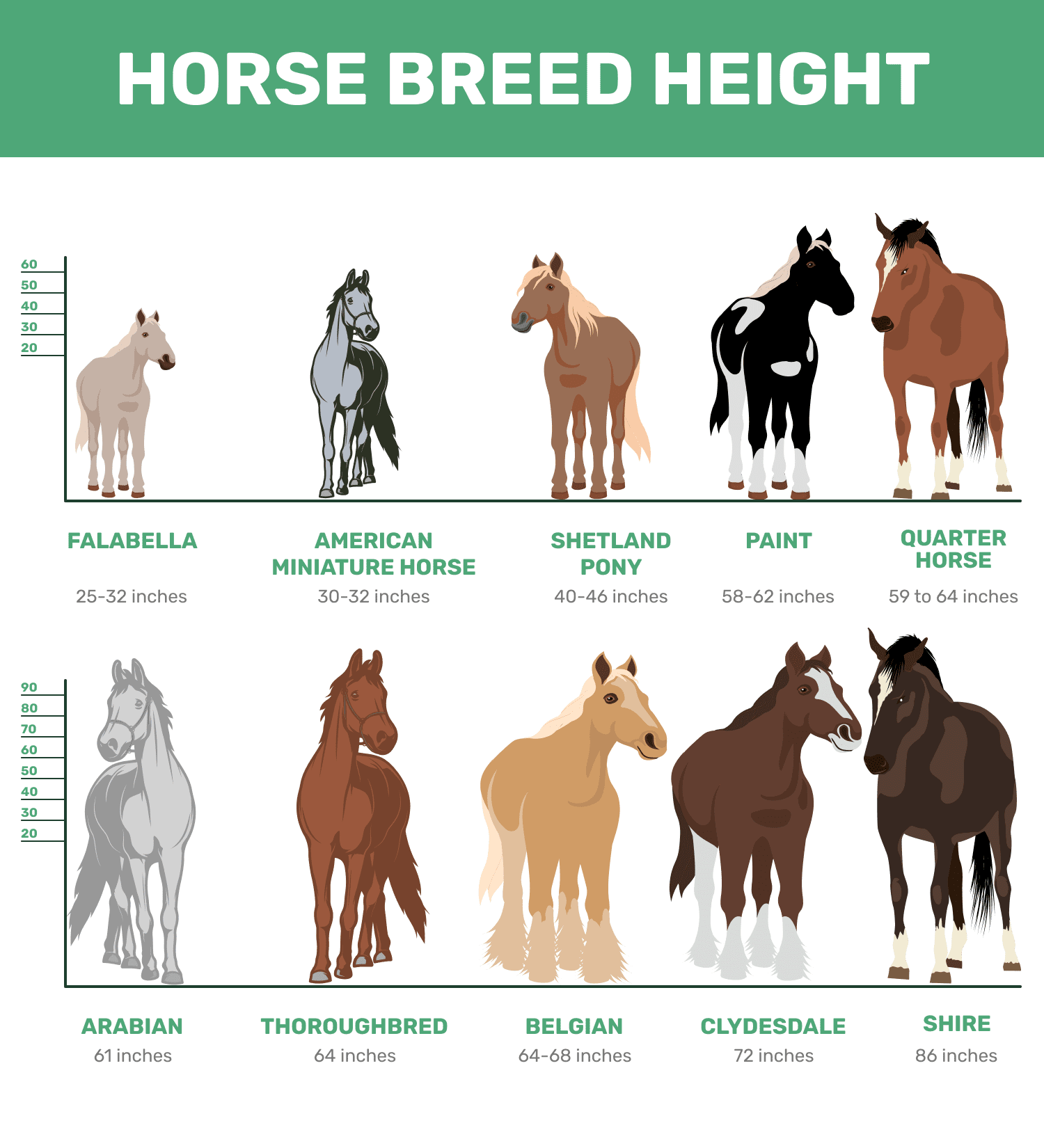
Ponies are beloved for their manageable size and pleasant temperaments, making them ideal for a range of equestrian activities. While they share similarities with larger horses, ponies typically stand no taller than 14.2 hands, a height that greatly influences their utility in activities such as children’s riding lessons and competitive showing. Delving into the various heights within pony breeds is not only helpful in selecting the appropriate pony for a given task but also sheds light on the adaptability and progression of these smaller equines.
Height Variations Among Pony Breeds
Pony breeds showcase an impressive height range, which enables them to fulfill diverse roles within the equine community. From the diminutive Shetland ponies, perfect for young children, to the more substantial Connemara ponies that can comfortably carry adults, knowing the height range is key when selecting a pony for specific equestrian pursuits.
- Shetland Pony: Typically 7–10.2 hands (28–42 inches, 0.71–1.07m)
- Welsh Pony (Section B): Generally 12.2–13.2 hands (50–54 inches, 1.27–1.37m)
- New Forest Pony: Often ranges from 12–14.2 hands (48–58 inches, 1.22–1.47m)
- Connemara Pony: Usually stands between 13–14.2 hands (52–58 inches, 1.32–1.47m)
Height Determining Pony Classifications
Breed associations employ height as a critical factor in categorizing pony breeds, with specific limits in place to uphold each breed’s distinct traits. This framework is especially crucial in competitive arenas to ensure that participants meet the established breed standards.
Connecting Height with Pony Function
A pony’s stature often dictates its most suitable roles. Smaller ponies are typically utilized for children’s programs and therapeutic riding due to their easier handling, while taller ponies are preferred in equestrian sports that require agility and power, such as show jumping.
Visualizing Pony Height Differences
Consider the following comparative data to better understand the height distinctions among common pony breeds:
| Breed | Height Range (hands) | Height Range (inches and meters) |
|---|---|---|
| Shetland Pony | 7–10.2 | 28–42 inches (0.71–1.07m) |
| Welsh Pony (Section B) | 12.2–13.2 | 50–54 inches (1.27–1.37m) |
| New Forest Pony | 12–14.2 | 48–58 inches (1.22–1.47m) |
| Connemara Pony | 13–14.2 | 52–58 inches (1.32–1.47m) |
Choosing Ponies by Height
In the selection process, the height of a pony is a crucial consideration, particularly for young or inexperienced riders. It is vital for the pony’s height to match the rider’s size for both safety and comfort. Height also affects a pony’s capabilities in handling various challenges, such as navigating obstacle courses.
Celebrating Pony Diversity Through Height
The spectrum of heights within pony breeds highlights their remarkable diversity, allowing them to serve in a multitude of equestrian capacities. This variety is embraced by breeders and equestrian enthusiasts, as it enables ponies to thrive in different settings, whether in competitive arenas or on outdoor adventures.
An understanding of the pony height spectrum enriches the equestrian experience, facilitating appropriate pairings between riders and ponies and enhancing the enjoyment of the numerous activities these versatile equines are capable of.
Enhancing Precision in Measuring Horse Height
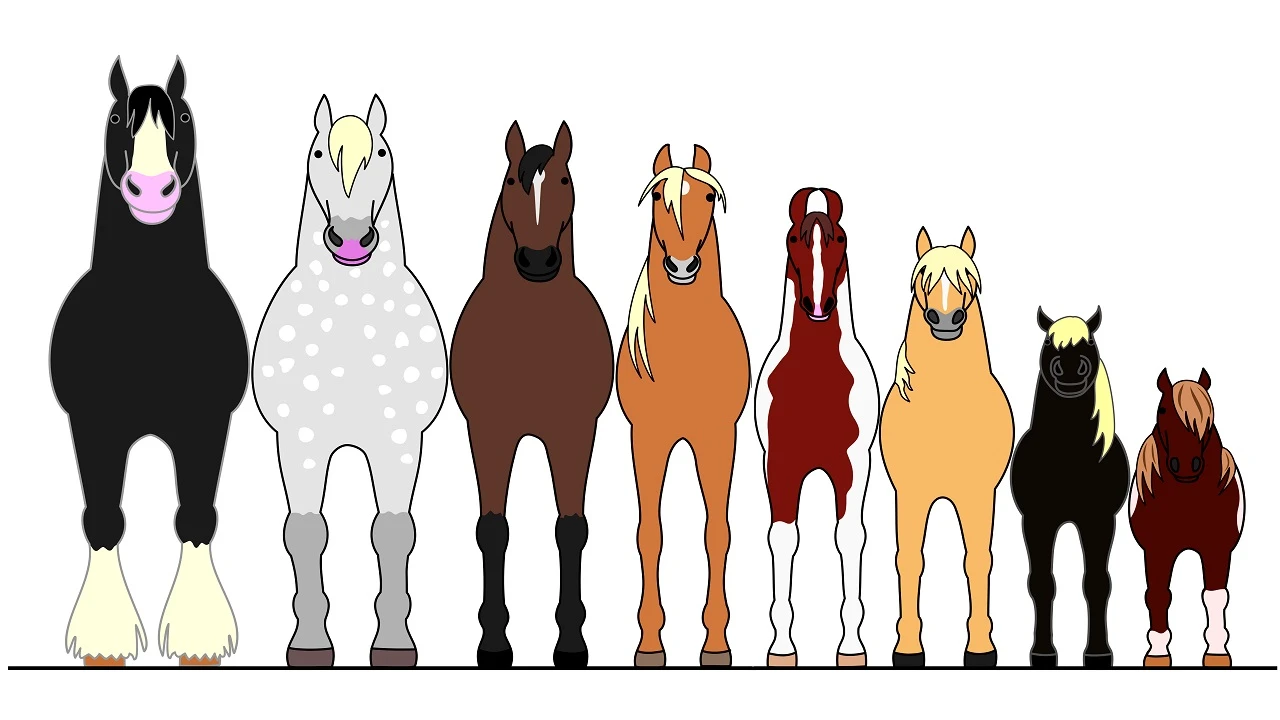
Accurate measurement of a horse’s stature is imperative across various equestrian endeavors, from health monitoring to compliance with competition standards. To aid horse owners, buyers, and competitors, this guide provides a comprehensive approach to the precise measurement of horses, including proper techniques and tools, as well as advice on avoiding common inaccuracies.
Selecting the Right Tools for Measurement
For a precise height measurement, a durable measuring stick with a sliding horizontal bar is the tool of choice. While a tailor’s tape is a secondary option, its flexibility can compromise accuracy. Employing a carpenter’s level can also be beneficial to ensure the ground is level, a prerequisite for a true measurement.
Choosing Measurement Instruments
- Opt for a horse measuring stick with a movable crossbar
- Use a tailor’s tape with care
Verifying the Ground Level
- Use a carpenter’s level to confirm evenness of the ground
Detailed Steps for Accurate Measurement
Begin by placing the horse on a level surface to avoid skewed results. The horse should stand square, with legs perpendicular to the ground and weight evenly distributed. With the measuring stick firmly on the ground, align the horizontal bar with the withers, the highest point of the horse’s shoulder. Record the horse’s height using both hands and centimeters to accommodate different contexts.
Correct Horse Positioning
- Ensure the horse is calm and stands squarely
- Check for equal weight distribution on all four legs
Utilizing the Measuring Stick Effectively
- Position the stick vertically beside the horse
- Lower the horizontal bar to the withers
- Take note of the measurement carefully
Identifying and Avoiding Measurement Errors
Measurement inaccuracies can occur due to incorrect horse positioning, uneven ground, or misplacement of the measuring stick or tape. Ensuring the horse is properly positioned and the measuring instrument is used correctly will help prevent these common mistakes.
Preventing Common Measuring Oversights
- Make sure the surface is level
- Position the horse accurately
- Use the measuring stick or tape correctly
- Measure at the correct point on the withers
Pro Tips for Consistent Measurements
Consistency is key in horse measurement. Having an assistant can provide stability and verification, and measuring at the same time of day can account for natural height variations. A logbook to track measurements can reveal growth patterns or changes in stature.
Ensuring Measurement Uniformity
- Seek assistance for steadying the horse and confirming measurements
- Perform measurements at the same time for consistency
- Maintain a log of measurements to track changes
Insights into Equine Stature
Understanding equine stature extends beyond aesthetics, as it plays a crucial role in determining suitability for specific roles and ensuring appropriate care. This segment addresses queries about horse height, offering insights into the reasons for its measurement, the range of horse sizes, and growth patterns.
Historical Significance of the Hand Unit
The use of hands as a unit for equine measurement has historical roots, providing a consistent method for horse traders to determine height without the need for specialized equipment. This practice has been universally adopted in the equestrian world, standing the test of time as a reliable measurement standard.
Extremes of Horse Stature
Horse breeds exhibit a wide range of sizes, from the towering Shire horse to the petite Falabella. These variations are a testament to the genetic diversity within the equine species and underscore the adaptability of horses to various roles and environments.
Key Stages in Equine Growth
The growth trajectory of horses is influenced by breed, genetics, and care. Full height is typically achieved by the age of four to five, with a horse’s development being closely monitored to inform decisions about diet, training, and overall health management.
- What factors impact the realization of a horse’s maximum height?
- How do breed standards affect horse stature?
- In what ways does measuring height benefit a horse’s health and management?
Additional Considerations on Horse Size
Further inquiries into horse size shed light on how stature impacts a horse’s performance in sports, influences health care strategies, and how advancements in technology could improve measurement accuracy.
| Query | Insight |
|---|---|
| Can stature influence a horse’s performance in competitions? | Yes, certain events may give an edge to horses of particular heights. |
| Is height significant for equine health management? | Indeed, a horse’s size can determine specific health care needs and preventative strategies. |
| What are the technological developments in height measurement? | New tools and methods are being developed to enhance the precision of measuring equine height. |
A comprehensive view of horse height acknowledges its crucial role in matching horses with appropriate tasks and riders, as well as its influence on breed diversity. The significance of accurately measuring and interpreting this characteristic cannot be overstated, as it is integral to the responsible stewardship of these versatile animals.
If you’re curious about the size of different horse breeds, you’re in the right place. While exploring the general question, “How Tall Is A Horse,” it’s fascinating to look into specific breeds. For instance, you might wonder about the height of a Quarter Horse, which is known for its agility and speed. To learn more, check out our detailed guide on how tall a Quarter Horse is. On the other hand, if you’re interested in the larger breeds, you’ll be amazed by the stature of the Shire horse. Dive into our article on how tall a Shire horse is for a closer look at these gentle giants. And for a broader understanding of horse sizes, our piece on how big horses can be offers a comprehensive overview. Whether you’re a horse enthusiast or just curious about these majestic creatures, you’ll find the information you seek with us.
Conclusion: The Significance of Horse Height
Understanding horse height is essential for the care and management of these animals. Whether you’re a rider choosing a suitable mount, a breeder aiming for certain characteristics, or simply a horse enthusiast, appreciating the stature of these magnificent creatures adds to the enjoyment and respect we have for them. Horse height, measured in hands, is a tradition that links us to our past and remains a practical and poetic part of equestrian life.



